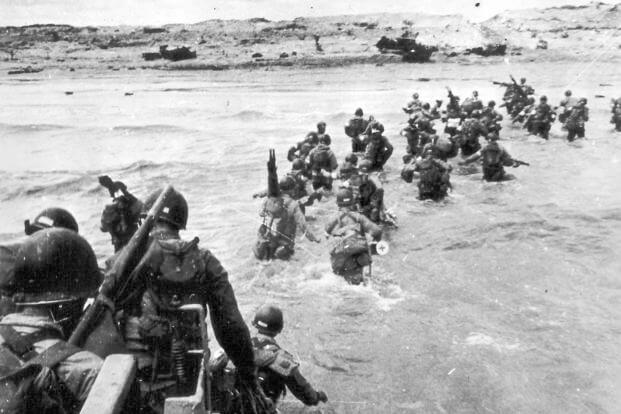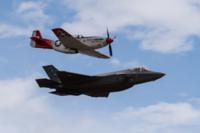Battling rough seas with five-foot waves, thrashing wind gusts and heavy enemy fire, U.S. Navy amphibious landing craft attacking Utah Beach on D-Day managed to achieve total tactical surprise.
"As our forces approached the French coast without a murmur from the enemy or from their own radio, the realization that once again almost complete tactical surprise had been achieved slowly dawned," recalled Sir Bertram Home Ramsay, naval commander-in-chief of the Allied Naval Expeditionary Force for the invasion, according to Naval Heritage and History Command's "Operation Neptune -- The Invasion of Normandy."
Which is not to say that naval support at Utah Beach was easy. Many became seasick on the way to the beachhead due to rough seas, and incoming enemy fire forced many soldiers to swim for more than 200 yards offshore, carrying at least 50 pounds of supplies.
Overcoming Setbacks
The overall Navy mission at Utah Beach, which included the Army's 82nd Airborne, 101st Airborne and 4th Infantry Division, not only required supporting the initial landing and attack mission, but also a need to sustain support as troops fought inland.
"They were not only off-loading troops but bringing supplies in, and keeping them supplied once they dropped the troops off. The Navy worked to keep the supply lines open for food, ammunition and other supplies," Guy Nasuti, Naval History and Heritage Command historian, told Military.com in an interview.
Also, landing craft carrying armored vehicles, such as tanks, had engine trouble and were overloaded, forcing them to drop troops farther away from the shore than initially planned. Some of the armored vehicles were so badly affected that many of them had trouble maintaining their role in the close-fire support plan. Considerable damage was inflicted on the smaller landing craft.
Despite these setbacks, Allied air bombardment and counter-battery fire from ships prevented the Germans from disrupting much of the landing. Furthermore, by deliberately placing themselves in less visible defensive positions, German fighters themselves had difficulty seeing and targeting the approaching force.
As amphibious craft that carried up to 200 soldiers at a time were being deployed from Landing Craft Infantry (LCI) vessels, it was necessary to prevent Germans from clearly seeing aggregated, or condensed, targets during the approach to shore. However, despite heavy casualties and the perils of a mission of this kind, the operation at Utah Beach was successful. In the Navy's text, Ramsay identifies several key factors for this, including a large absence of German Luftwaffe planes able to conduct reconnaissance missions.
"The cover and deception plan; the bad weather, which caused the enemy to withdraw his E-boat patrols to Cherbourg; and, finally, the radio counter-measures employed by our forces," were all factors leading to the Allied victory during the operation, Ramsay said.
Battling for the Beach
As expected, amphibious forces approaching the beachhead were hit with German artillery, mortars and small-arms fire.
"The sea was very rough, and everybody got seasick and we were soaking wet, cold and miserable," said Staff Sgt. John Robert Slaughter, Company D, 116th Infantry, 29th Division, according to the journal American History." It was June, but it felt like November, December. We were under fire all the way. When we got 200, 300 yards from shore, we started taking artillery and mortars, and then as we got closer in, the small arms opened up. And they cut us down pretty good. Some of the men couldn't swim, and we were carrying 60 pounds of equipment or weapons. It was a tough deal,"
Another infantryman from the Army's 1st Division recalled diving in the ocean to save a friend after their craft hit a German mine.
Sgt. Claud C. Woodring, 18th Infantry, 1st Division, said, "Our landing craft hit a submerged mine 200, 300 yards from shore and sunk. One of my buddies went overboard, and I let my rifle down to help ease him up. He weighed 200 pounds; I weighed 125 pounds. He won. He was in the water with two guns, so when we abandoned the ship, so to speak, I had two Bangalore torpedoes. We swam ashore.
"At this point in time, it was just breaking daylight. All the time, there's people pushing right behind you. There are thousands coming on. Probably the only reason I survived the assault on the beach was the Germans could fire into a massive crowd behind me, and they weren't worried about the first person up ahead."
Want to Know More About the Military?
Be sure to get the latest news about the U.S. military, as well as critical info about how to join and all the benefits of service. Subscribe to Military.com and receive customized updates delivered straight to your inbox.















